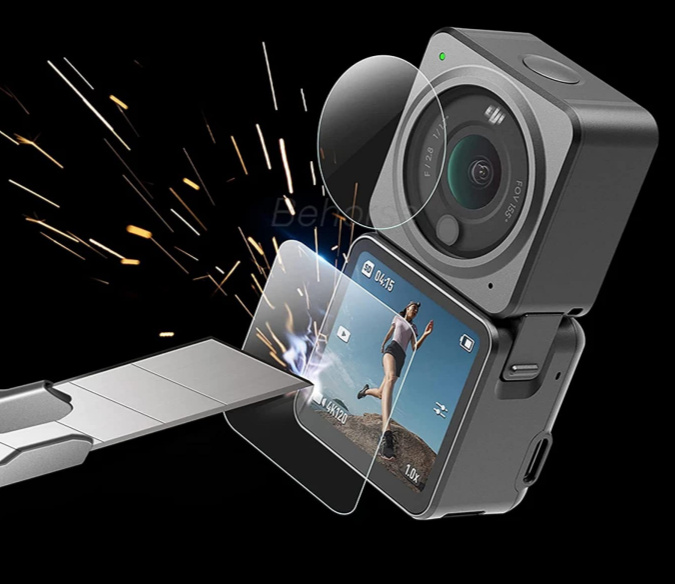
Action cameras have become a popular tool for capturing thrilling adventures and extreme sports. These compact devices allow users to document their experiences from unique angles and perspectives, resulting in stunning footage that immerses viewers in the action. However, extreme temperatures can pose a significant risk to the functionality and longevity of action cameras. Whether it’s scorching heat or freezing cold, the right action camera protector can help safeguard your device and ensure it performs optimally. In this article, we will explore how to protect your action camera from extreme temperatures with the right protector.
Understanding the Impact of Extreme Temperatures
Extreme temperatures can have detrimental effects on electronic devices, including action cameras. Both extreme heat and extreme cold can lead to performance issues, reduce battery life, and even cause permanent damage. Here’s a closer look at the impact of extreme temperatures on action cameras:
- Heat: Excessive heat can cause the camera’s internal components to overheat, leading to performance problems and potential damage. Heat can also impact the battery life, causing it to drain quickly and reducing the overall usage time of the camera. Additionally, high temperatures can cause the camera’s lens to warp or develop cracks, affecting the quality of the footage.
- Cold: Extreme cold temperatures can cause the camera’s battery to drain rapidly, leading to decreased usage time. Cold temperatures can also affect the camera’s LCD screen, causing it to freeze or become unresponsive. Furthermore, cold weather can cause condensation to form inside the camera when transitioning between extreme cold and warm environments. This condensation can potentially damage the camera’s internal components.
Choosing the Right Action Camera Protector
When it comes to protecting your action camera from extreme temperatures, selecting the appropriate protector is crucial. The right protector can help insulate the camera from extreme heat or cold, ensuring its optimal performance. Here are a few key considerations when choosing an action camera protector for extreme temperature protection:
- Heat Resistance: Look for protectors that are specifically designed to withstand high temperatures. These protectors should be made from materials that offer excellent heat resistance, such as high-grade plastics or heat-resistant polymers. Furthermore, consider protectors with built-in heat sinks or cooling mechanisms that help dissipate heat and prevent the camera from overheating.
- Cold Resistance: For extreme cold temperatures, choose protectors made from materials that can withstand freezing temperatures without compromising the camera’s performance. Insulated protectors, such as those with thermal layers or built-in insulation, can help maintain a stable temperature inside the camera, preventing issues associated with cold weather. Additionally, consider protectors with anti-condensation features, like moisture-absorbing inserts or coatings, to minimize the risk of condensation forming inside the camera.
- Thermal Regulation: Some advanced action camera protectors feature built-in thermal regulation systems. These systems use technology like phase-change materials or thermoelectric cooling to actively regulate the temperature inside the camera housing, ensuring optimal performance regardless of external temperature extremes. These protectors are especially useful when operating in environments with rapidly changing temperatures, such as moving from hot to cold environments or vice versa.
- Insulation and Padding: Look for protectors that provide adequate insulation and padding to protect the camera from extreme temperatures. Insulation helps create a barrier between the camera and the external environment, maintaining a stable temperature inside the housing. Padding, such as foam or cushioning materials, can provide additional protection from impacts and temperature fluctuations.
- Compatibility and Accessibility: Ensure that the protector you choose is compatible with your specific action camera model. Check for proper cutouts and access points that allow you to operate the camera’s buttons, ports, and touchscreens without removing the protector. This ensures that you can easily make adjustments and control the camera’s functions while still keeping it protected from extreme temperatures.
Tips for Using Action Camera Protectors in Extreme Temperatures
In addition to choosing the right protector, there are a few tips and best practices to follow when using your action camera in extreme temperatures:
- Preconditioning: In extremely hot or cold environments, it’s recommended to precondition your camera before use. This involves exposing the camera to more moderate temperatures for a short period, allowing it to adjust gradually to the extreme conditions it will encounter. This can help prevent sudden temperature shocks and reduce the risk of damage.
- Battery Management: Extreme temperatures can significantly impact battery performance. To maximize battery life in extreme heat or cold, keep spare batteries in insulated pouches or pockets to maintain their temperature. Always carry fully charged spare batteries, as the cold can drain batteries faster than normal. If possible, avoid using the camera while charging in extreme temperatures, as this can generate additional heat.
-
Storage and Transportation: When traveling to and from extreme temperature environments, ensure proper storage and transportation of your camera. If the camera has been exposed to extreme cold, allow it to gradually warm up to room temperature before using it to prevent condensation inside the housing.









